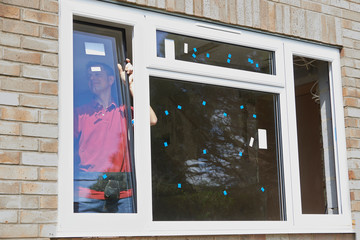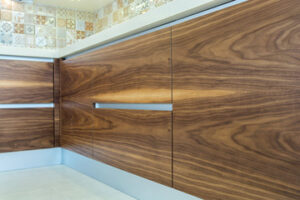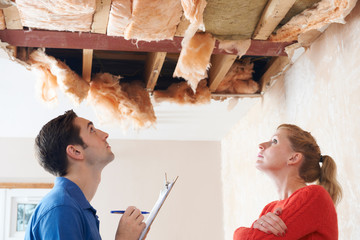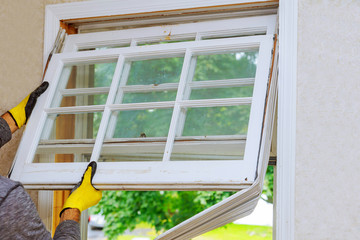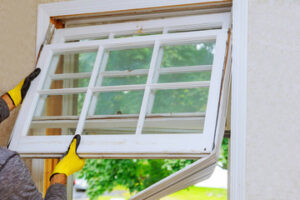Enhancing home energy efficiency with new windows can have a significant impact on comfort and cost savings. Windows play a vital role in regulating the indoor temperature of a home, contributing to how much energy is needed to heat or cool the living space. Over time, older windows tend to lose their insulating properties due to wear and tear, poor sealing, and outdated materials. Contact Window Replacement Rockville MD for professional help.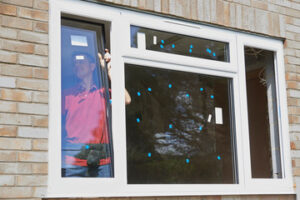
This leads to increased heat transfer between the inside and outside of the house, which forces heating and cooling systems to work harder to maintain a consistent temperature. Installing new windows designed with modern materials and advanced insulating technologies helps to minimize heat loss and gain, improving energy efficiency and reducing overall energy consumption. This change not only leads to lower utility bills but also enhances the overall comfort of a home throughout the year.
One of the main reasons that replacing windows improves energy efficiency is the improved insulation properties of modern window designs. Older windows, especially those with single-pane glass or deteriorating frames, allow for significant heat transfer. During colder months, heat generated indoors escapes through the glass and gaps in the frame, while cold air seeps in from the outside. This results in drafts and uneven room temperatures, making some areas of the home feel colder than others. In warmer months, the reverse happens, with heat from the sun penetrating through the glass and warming up the indoor air. This places a greater demand on air conditioning systems, which leads to higher energy consumption. New windows are designed with double or triple-pane glass, insulating gas fills, and improved frame materials that act as barriers against heat transfer. These features help maintain a stable indoor temperature, reducing the workload on heating and cooling systems and lowering energy use.
Another important factor in enhancing home energy efficiency with new windows is the use of specialized coatings and materials. Modern windows often feature low-emissivity (low-E) glass coatings that reflect infrared heat while allowing visible light to pass through. This helps keep heat inside during winter and blocks heat from entering during summer. Low-E coatings also protect against harmful ultraviolet (UV) rays, which can cause fading of furniture, flooring, and fabrics. Additionally, window frames made from materials such as vinyl, fiberglass, or composite provide better insulation than traditional wood or aluminum frames. These materials resist temperature-related expansion and contraction, which helps maintain a tight seal and prevents air leaks. By combining advanced glazing technologies with durable, energy-efficient frame materials, new windows create a more effective barrier against outdoor temperature changes, reducing the need for excessive heating and cooling.
The design and installation of new windows also contribute to improved energy efficiency. Poorly installed or improperly sealed windows can allow air to leak around the edges, reducing the overall effectiveness of even the most advanced window designs. Professional installation ensures that windows are properly aligned, sealed, and fitted to eliminate gaps and drafts. The design of the window itself also affects energy efficiency. For instance, casement and awning windows that close tightly against the frame tend to be more energy-efficient than sliding or single-hung windows, which have more potential for air infiltration. Strategically placing windows to maximize natural light while minimizing direct exposure to harsh sunlight can further reduce the need for artificial lighting and air conditioning, contributing to overall energy savings.
Ventilation is another aspect of home energy efficiency that can be enhanced with new windows. Older windows with difficult-to-open mechanisms or damaged seals often restrict airflow and limit the ability to naturally cool a home. New windows are designed with easy-to-operate hardware and improved opening mechanisms that allow for better control over airflow. Windows that open outward, such as casement and awning windows, create a tighter seal when closed but allow for increased ventilation when open. Double-hung and sliding windows provide flexible options for controlling airflow, allowing homeowners to increase cross-ventilation and reduce the reliance on mechanical cooling systems. Improved ventilation helps maintain a more comfortable indoor environment and reduces humidity levels, which further contributes to overall energy efficiency.
Sound insulation is an additional benefit of enhancing home energy efficiency with new windows. Older windows with thin glass and deteriorating seals allow more external noise to penetrate the home, creating an uncomfortable and disruptive environment. New windows with multiple glass panes, insulating gas fills, and improved frame materials provide better soundproofing by reducing the transmission of noise from the outside. This creates a quieter and more peaceful indoor environment, which enhances comfort and allows for better relaxation and focus. Improved sound insulation also contributes to energy efficiency by reducing the need to use noise-canceling devices or background sound systems to mask external noise.
Replacing windows also improves natural light and solar heat gain management, which are key factors in home energy efficiency. Modern windows are designed to maximize the amount of natural light entering the home while minimizing heat gain from direct sunlight. Low-E coatings and specialized glazing options allow for the passage of visible light while reflecting infrared heat, creating a bright yet cool interior environment. Proper window placement and design can reduce the need for artificial lighting during the day, lowering energy consumption and utility costs. At the same time, managing solar heat gain reduces the need for air conditioning, contributing to a more energy-efficient home.
Another advantage of installing new windows is the positive environmental impact associated with reduced energy consumption. Heating and cooling systems account for a significant portion of household energy use, and improved insulation and reduced heat transfer from new windows help lower overall energy demand. This, in turn, reduces the amount of energy produced by power plants, leading to lower greenhouse gas emissions and a smaller carbon footprint. Some modern windows are also made from recyclable materials and manufactured using environmentally friendly processes, which further enhances their sustainability. By choosing energy-efficient windows, homeowners contribute to a more sustainable future while benefiting from the immediate advantages of reduced energy bills and improved home comfort.
Enhanced security is another benefit that indirectly contributes to energy efficiency. Old windows with weak frames, deteriorating locks, and thin glass are more vulnerable to break-ins and accidental damage. Modern windows are constructed with reinforced frames, tempered or laminated glass, and advanced locking mechanisms that improve overall security. Better-sealed windows not only protect against intrusions but also prevent air leaks and drafts, contributing to improved insulation and energy efficiency. The increased strength and durability of modern windows also reduce the likelihood of damage from weather events, further maintaining their insulating properties over time.
Financial benefits are another important aspect of enhancing home energy efficiency with new windows. Although the initial cost of window replacement can be significant, the long-term savings on energy bills, maintenance costs, and potential repair expenses often outweigh the upfront investment. Many utility companies offer rebates or incentives for installing energy-efficient windows, which can further reduce the overall cost. Increased home value is another financial advantage, as energy-efficient windows are a sought-after feature among potential buyers. Homes with modern windows tend to appraise higher and sell more quickly than those with outdated ones, making window replacement a sound financial decision that provides a strong return on investment.
Maintenance and longevity are also key factors in improving energy efficiency with new windows. Older windows often require frequent repairs and maintenance due to peeling paint, rotting wood, and malfunctioning hardware. Modern windows are designed with low-maintenance materials that resist warping, cracking, and fading. Vinyl, fiberglass, and composite frames are resistant to moisture and UV damage, reducing the need for repainting or refinishing. Many new windows are also designed with easy-to-clean features, such as tilt-in sashes, which simplify regular maintenance and keep the windows looking new for longer. Reduced maintenance requirements contribute to long-term cost savings and ensure that the windows continue to provide optimal energy efficiency for years to come.
Ultimately, enhancing home energy efficiency with new windows involves more than just improving insulation and reducing heat transfer. Modern window designs incorporate advanced materials, innovative glazing technologies, and improved frame construction to create a more comfortable, secure, and environmentally friendly living space. The benefits of replacing old windows extend to improved ventilation, noise reduction, natural light, and reduced environmental impact. Financial incentives and long-term savings make window replacement a practical and rewarding investment. By enhancing energy efficiency through new windows, homeowners can enjoy a more comfortable living environment while reducing their overall energy consumption and environmental footprint.
